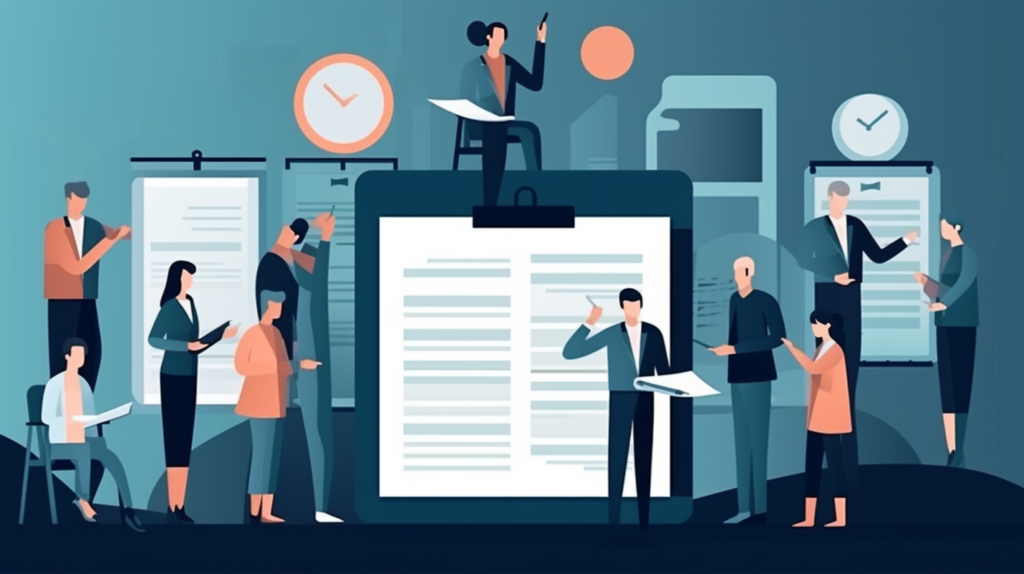Introduction
As a small business owner, your time is precious. You have a lot of responsibility and many different tasks to juggle on a daily basis.
As such, it’s no surprise that you’ve had to become quite adept at delegating projects and responsibilities to your staff members so that they can get things done while freeing up some time for you to focus on other things.
One of the most effective ways you can do this is by training them on how to handle certain things themselves instead of having you do it for them every single time. This doesn’t just save you time; it also gives them more autonomy over their work (and their lives) while helping them grow into leaders who will be able to manage their own workloads in the future as well.

Importance of effective training for small business teams
Training is a key factor in maintaining a competitive edge. The ability to develop new skills, build confidence and become more productive are all benefits of training that can help you retain your best employees.
Training is also an opportunity for employees to learn how to work better together as part of a team, which will help them reach their full potential.
Training can help your employees to develop new skills that will make them more valuable. It can also boost their confidence and productivity, which will help you attract and retain top talent in your field.
Training is also an opportunity for your employees to learn how to work better together as part of a team, which will help them reach their full potential. Training can help your employees develop new skills that will make them more valuable. It can also boost their confidence and productivity, which will help you attract and retain top talent in your field.

“Tell me and I forget, teach me and I may remember, involve me and I learn.”
– Benjamin Franklin
Overview of the benefits and challenges of team training
Team training is an essential part of building and managing a successful business. A well-trained team will help your company grow, and it can make the difference between success and failure. But there are also challenges to implementing team training programs that you should be aware of before starting one yourself. In this article, we’ll look at some of those challenges as well as how small business owners can overcome them so they can get started on building their own effective team training program.
Here are some of the challenges that you should be aware of before starting a team training program:
-Time constraints – Lack of funds – Trainee motivation
-Lack of training material – Lack of qualified trainers – Employee turnover
-Lack of training facilities – Employee performance issues

“The more that you read, the more things you will know. The more that you learn, the more places you’ll go.”
― Dr. Seuss
Assessing Training Needs
- Assess the needs of your team.
- Identify knowledge and skill gaps.
- Identify training resources available to you.
- Determine how much time and money is available for training purposes, as well as any other limitations (such as needing to be done in-house).

“Wisdom…. comes not from age, but from education and learning.”
― Anton Chekhov
Defining Training Objectives
Before you start training, it’s important to define your objectives. This means defining the problem before starting on a solution. If you don’t know what outcome you want, how can anyone else? You need to set ambitious but realistic goals for yourself and your team members so they can be achieved within 3-6 months of starting the program.

Here are some examples of tangible fitness goals:
- Lose 10 pounds in 3 months (2 pounds per month)
- Run 5 miles in 25 minutes or less (1 minute per mile faster than the current time)
Designing Training Programs
The first thing to do is to identify the needs of your business. What are some of the goals you want to achieve? Do you need more team members who can perform certain tasks more efficiently, or are there some areas where employees need additional training in order to meet customer expectations?
Once these needs have been identified and prioritized, it’s time for the second step: designing training programs that meet those needs. This part can be a little tricky because it involves coming up with an appropriate curriculum for each individual employee, but don’t worry! We’ll break down all of this information into bite-sized pieces so that even if you’re not an expert at designing training programs from scratch (like me), it won’t feel overwhelming at all!

Utilizing Internal Expertise
- It’s important to have internal experts. You can’t be an expert in every area, so it’s important to find people who are and make sure they know the ins and outs of the business.
- Ask for help when you need it. If there’s something that needs doing, but you’re not sure how or where to start, ask someone who might know more than you do!
- Don’t be afraid of asking questions; it shows that you’re interested in learning more about their work and being a better team member overall.

Implementing Onboarding Training

Onboarding is the process of integrating a new employee into an organization. It is a critical step in the employee lifecycle, and it helps ensure that your organization achieves its goals by providing new employees with the knowledge and skills they need to be successful in their roles. The goal of onboarding is to integrate them into your culture while also building relationships between them and their colleagues, supervisors, managers, and other key stakeholders within your business.
Conducting Ongoing Skill Development
Skill development is an important part of your team’s growth and success. It can be challenging to find the time to train employees in new skills, but it’s essential that you do so if you want them to advance their careers and stay ahead of competitors.
- When should I conduct ongoing skill development?
- Regularly: At least once per year, schedule a training session for each member of your team (unless they’ve already received some type of training). This keeps everyone up-to-date on best practices in their given field or industry; it also gives employees an opportunity to develop new skill sets through hands-on practice sessions with experts in their fields.
- How do I conduct ongoing skill development?
There are several ways that small business owners can offer ongoing skill development programs:
- Host monthly workshops at your office where experts from outside organizations come in and teach various topics related to running or managing a successful business; these could include finance management tips from local bankers or marketing strategies from professional advertisers who specialize in helping small businesses grow sales quickly but efficiently without breaking their budgets.
“Live as if you were to die tomorrow. Learn as if you were to live forever.”
― Mahatma Gandhi
Tailoring Training to Individual Needs
- Tailoring Training to the Needs of the Individual
- Tailoring Training to the Needs of a Team
- Tailoring Training to Business Needs
Training Is an Investment in the Company and Employees: Training is an investment that can pay off in a variety of ways. When companies invest in training, they improve their bottom line by increasing employee productivity and performance. They also build loyalty among their employees by making them feel appreciated and valued.
Incorporating Team Building Activities
Team building activities can be a great way to help your team bond and build trust. However, it’s important that the activity is fun and engaging enough so that everyone feels comfortable participating.
Incorporate these types of team-building activities into your training strategy:
- Icebreaker games – These are activities that get people talking to one another in small groups, such as “Two Truths and a Lie” or “The Name Game.” They’re great for getting everyone involved right away!
- Quiz questions – Quizzes are another excellent way for people who don’t know each other well yet (or at all) to get acquainted with one another’s personalities. Try asking questions like “If you could travel anywhere in the world tomorrow, where would it be?” Or “What was your favorite movie as a kid?”

Evaluating Training Effectiveness
When you evaluate training effectiveness, it’s important to consider the following:
- Did the employee learn what you wanted them to learn? If not, why not? Perhaps some parts of the training were unclear or didn’t resonate with the employee.
- How does this new knowledge help them perform their job better? If there’s no immediate impact on performance, it may be because they aren’t using their new skills in real-world situations yet. You should try again with another training session or ask them how they plan on applying their new knowledge in practice at work.
Are you expecting too much of your employees? If someone is being trained for a new job or learning new skills, they may not be ready to perform at the same level as an experienced employee. This is especially true if there are specific expectations for performance during training. For example, if you ask them to complete a project that’s similar to what they’ll do on the job but expect it to be done perfectly, then this can cause stress and anxiety for them.
Conclusion
We hope that this article has given you some insights into the importance of training your team, as well as some ideas for how to do it. We know that business owners have a lot on their plates and don’t always have time to think about this kind of thing, but if you want your business to succeed long term, then investing in training is one way that will pay off big time!


